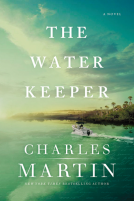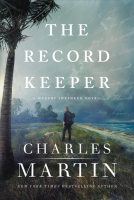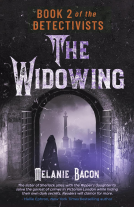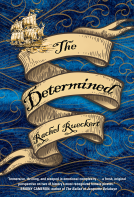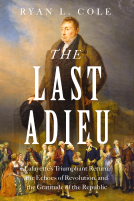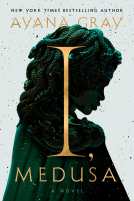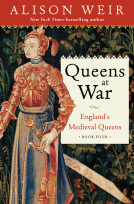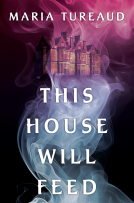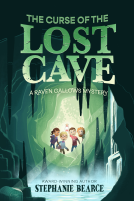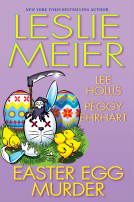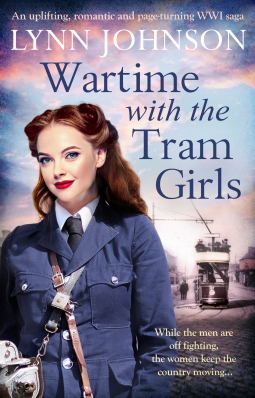
Wartime with the Tram Girls
by Lynn Johnson
This title was previously available on NetGalley and is now archived.
Send NetGalley books directly to your Kindle or Kindle app
1
To read on a Kindle or Kindle app, please add kindle@netgalley.com as an approved email address to receive files in your Amazon account. Click here for step-by-step instructions.
2
Also find your Kindle email address within your Amazon account, and enter it here.
Pub Date Mar 03 2021 | Archive Date Feb 18 2021
Talking about this book? Use #WartimewiththeTramGirls #NetGalley. More hashtag tips!
Description
While the men are off fighting, the women keep the country moving…
July 1914: Britain is in turmoil as WW1 begins to change the world. While the young men disappear off to foreign battlefields, the women left at home throw themselves into jobs meant for the boys.
Hiding her privileged background and her suffragette past, Constance Copeland signs up to be a Clippie - collecting money and giving out tickets - on the trams, despite her parents’ disapproval.
Constance, now known as Connie, soon finds there is more to life than the wealth she was born into and she soon makes fast friends with lively fellow Clippies, Betty and Jean, as well as growing closer to the charming, gentle Inspector Robert Caldwell.
But Connie is haunted by another secret; and if it comes out, it could destroy her new life.
After war ends and the men return to take back their roles, will Connie find that she can return to her previous existence? Or has she been changed forever by seeing a new world through the tram windows?
A captivating, lively, romantic saga set in WW1 that will engross fans of Johanna Bell and Jenny Holmes.
Available Editions
| EDITION | Ebook |
| ISBN | 9781912973552 |
| PRICE | £2.59 (GBP) |
Average rating from 19 members
Featured Reviews
 Rachel F, Reviewer
Rachel F, Reviewer
Wartime with the Tram Girls by Lynn Johnson is a wonderful WWI-era historical fiction novel that I truly, truly enjoyed. I have to admit that I did not read the first in this series: The Girl from the Workhouse, however I really loved this book and feel it can easily be a standalone. I will be reading the first installment now, though. I am sure I will like it just as much.
I really loved the time abd location: Staffordshire 1910s. Pre and during WWI England. A decade of change: world fighting, instability, societal and gender roles changing, and Women’s Suffrage. I loved every moment I got to follow Connie’s story. She is imperfect, likable, realistic, strong, loyal, passionate, fiery, and smart. I loved her progression throughout the book and I enjoyed meeting Connie, Ginnie, Sam, and the rest of the fine character cast. There were a few twists, obstacles, and in the end, a positive journey.
I really enjoyed this story and I hope that this series continues. I look forward to what Ms. Johnson has in store for readers next.
5/5 stars
Thank you Ng and Hera Publishing for this wonderful arc and in return I am submitting my unbiased and voluntary review and opinion.
As of 2/5/21 no GR or Bookbub listings are created for this book, therefore I will post it to Gr, Bookbub, Amazon, B&N accounts as soon as created/publication day and my Instagram account on Publication day.
Set in the busy pottery town of Stoke-on-Trent during World War I, the historical fiction novel, “Wartime With The Tram Girls,” by Lynn Johnson, begins as Mr. and Mrs. Copeland are attempting to find their 19 year old daughter a suitable husband among the well-connected. They head off to Derby Day at Epsom (yes, the Epsom of the famed Epsom salts!) but instead of finding a husband of good quality, Miss Constance Copeland fuels her inner fire for freedom! A ‘crazed suffragette woman’ had deliberately run onto the racetrack in an effort to bring down the king’s horse and kill herself. When Constance discovers that the woman belonged to the Women’s Social and Political Union, she wondered “how much dedication did it take to believe so intensely that you were prepared to die for that belief?” After a sleepless night and convinced that she could give her life for a cause, Constance joins the WSPU. Taking her maid, Alice, with her, Constance sneaks out of Holmorton Lodge and heads for Trafalgar Square to take place in a demonstration and exercise her solidarity. The plan was to sneak out and sneak back unnoticed. Unfortunately, Constance lands herself in Holloway Prison and Alice ends up in a safe house. A year later, undaunted by her father’s treatment of her and fueled by her desire to do something that mattered, Constance is handing out political pamphlets when she meets the love of her life, Matthew Roundswell. After a whirlwind romance, they set a wedding date and plan their perfect day. As Constance has already figured out, things don’t always go as planned. The secret she carries, once revealed, will impact her life profoundly. After shaking off the dust, Constance sets her eyes on becoming a ‘clippie,’ taking the tram fare from passengers. Excited about earning equal pay for equal work, Constance’s future is forever changed as she now sees things through the tram windows.
This story is about the birth of a heroine, a suffragette, who in finding her purpose stops at nothing in blazing her trail to contribute and feel a sense of belonging and empowerment. The author is a Stokie; she was born and raised in The Potteries and has spent much of her life there. This, in addition to her detailed historical knowledge of the setting, makes this story authentic, thereby giving readers and authentic experience. Johnson has crafted her characters as true representations of the time period. The protagonist is fiery and smart, yet aware of her social status. As the novel progresses, we see her grow and mature while still maintaining her passion. On the other hand, we learn to loathe Mr. Copeland as he exemplifies everything from which Connie is trying to break free. The underlying message for readers is not to allow anyone to extinguish one's light. Connie sees what it has done to her mother and refuses to let her father, Matthew, her mother-in-law, nor societal constraints dampen her spirit. Trading Constance for Connie, she forges a new path for herself at a time when history is on her side.
Thanks to Lynn Johnson, Hera Books and NetGalley for the advance copy in exchange for an honest review.
Published March 03, 2021 as book 2 of the Potteries Girls Sagas
Beautiful Wartime with the Tram Girls is set in WWI Staffordshire. Independent and spirited Constance Copeland, a young middle class woman, wishes to earn her way and craves something different, something unique. She applies for and becomes a clippie, issuing tickets and collecting money on a tram system which is traditionally a man's job.
At work Constance becomes Connie and becomes fast friends with Betty, Jean and Inspector Robert Caldwell. She loves what she does but her job is not without incident. She had also been a suffragette. Like most people, she has a secret. Not only do we get glimpses into the working life of a clippie but also into human nature, rights, effects of war and hope. The war itself is not described in detail; this book does not focus on the physical harsh realities. However, the author is inspired by true events. I really like the mix of nonfiction and historical fiction. The historical details such as the clippie uniforms make the scenes come alive.
Historical Fiction and General Fiction readers ought to pick up this charming book. I recommend the first one as well as it deserves to be read.
My sincere thank you to Hera Books and NetGalley for allowing me the pleasure of reading this delightful book!
Lynne Johnson, Wartime with the Tram Girls, hera books, 3 March 2021
I found the description of Wartime with the Tram Girls immediately enticing: a young middle-class woman with a suffragette past takes up wartime work as ‘clippie’ on the trams during the First World War.
Constance Copeland is the daughter of a businessman who, having sold his Manchester business moved to The Potteries in 1909. Her mother had been a Workhouse Friend and has brought Alice from there into their home as a servant, together with a gardener, cook, and another young maid. It is now 1913 and Constance and her family are to travel to London in a first-class carriage to celebrate Constance’s nineteenth birthday at the Epsom Race Course. The planned treat begins an argument between Edwin and Agatha Copeland about money, creating the perfect tone to the theme throughout the novel, the roles appropriate to women and men. The dispute about the handling of finances impacts on Constance’s eventual entry to the world of paid work – Mr Copeland believes that financial matters are his province alone, despite his wife’s belief that ‘as a modern woman’ she should have some input.
Staffordshire and the potteries provide a backdrop to women’s work choices pre-war, and the poor quality of life lived by many in such locales. In contrast, the Copelands are wealthy. Edwin Copeland is keen for Constance to marry well, and this provides the early debate around marriage and its importance to women, and their role in a marriage. Firstly, Constance’s romantic story revolves around a man deemed very suitable by Constance’s father; a later romantic storyline takes an intriguing turn when a possible suitor, like Constance, has a past that needs explanation.
The dispute about Constance’s desire for paid work, and the nature of that work continues to highlight the broader debate about women’s role. On the domestic war front Constance is replacing, temporarily, the men who have gone to fight. At the Potteries Tram Depot she meets two women from an entirely different class and men who have suffered the ravages of war; experiences the precariousness nature of work for women who adopted ‘men’s jobs’; and the pleasure in earning wages. Although her activity with the suffragettes is behind her, as they changed tactics to support the war effort, some of the principles they imparted remain with Constance. She is prepared to adapt to changing circumstances relishing the way in which women and men’s roles are forced to change and questioning the expectation that she should fulfil traditional women’s roles at the cost of her independence.
Constance’s demand for more freedom from pre-war ideas challenge her parents and past, and her choice opposes the dictates of class and gender. She shortens her name to Connie to hide her class background when she becomes a clippie. This has ramifications that she could not envisage, adding to the development of both the feminist and romantic threads of the story. Her friendships with two women who join the trams at the same time, bring into the novel details of their stories, past and present. The descriptions of the women’s work experiences on the trams are delightful, we can almost feel the heaviness of the money bag and ticket machine draped around the women’s bodies. At the same time as the difficulty of the work is shown, the joy of comradeship and developing new capabilities are as real. Romantic attachments are part of the experience and the way in which this is dealt with again shows Johnson’s solid research and understanding of the imperatives of women’s lives in a period where women’s paid work was temporary, limited in prospects and often a life of drudgery. Johnson also shows that romance can burgeon in the least likely of places with seemingly plain characters. Connie’s enduring relationships with women in service again emphasises the way in which the war at times broke down class barriers at home as well as on the battlefield.
The melding of the various romances and the way in which women in this period deal with a different social environment requires clever characterisation, story line and writing. The deftness with which Lynn Johnson combines research about the suffragettes’ and suffragists’ interaction and the burgeoning white feather movement versus conscientious objectors, together with romantic alliances is a credit to her: she makes the reader looking for a feminist story as satisfied as one wanting romance.
Where I think that the writing is engaging, leading me to give this novel three (how I wish there was a half star available) rather than four stars, is in the last chapters. These are not as cleverly written, with a lot of detail which I found superfluous. However, it is possible that Johnson is using this as a device to set the scene for a third novel (Wartime with the Tram Girls is her second with some of the same characters). In this case the chapters provide a thorough grounding in the post war circumstances of the characters and their possible futures.
That criticism aside, I found this an appealing story, with well-drawn characters. Although Constance’s father appears unwarrantedly keen to have her married off this is a clever device. Where initially Mr Copeland’s behaviour seems too strong for the circumstances with which the reader is familiar, there is a mystery behind his zeal. This is only resolved near the end of the novel, creating a satisfactory tension from beginning to resolution. Similarly, Mrs Copeland is a complex character. She shows the way in which women were forced to manoeuvre between changing societal demands during the war, her commitment to her marriage and her desire to satisfy her daughter’s needs. Connie is a character who keeps the plot alive, with her early resentfulness at the boundaries that impact women, to her challenging them and finding a way to lead a resourceful and satisfying life on the trams. Despite having to leave that work when the men come home, Connie’s experiences and her new friendships have changed her life. To be with her on that journey makes a thoroughly satisfying read.
 Kathleen H, Educator
Kathleen H, Educator
I enjoyed reading this book because I learned a lot about women during the first world war. The way they took over men's jobs. There was a good storyline and interesting characters. The two main ones were strong and courageous, especially Connie who had to be to help her family and friends. There was sadness in the story but happiness and hope for the future. I do recommend that you read this book.
I initially struggled to get into the book finding some of the suffragette storyline a little far fetched and predictable. I persevered and am glad I did as I thoroughly enjoyed the rest of the book. I have not read the first in the series so may now go back and do so.
The characters were all likeable. I would have liked to have had more of the war storyline woven into the story; we have no idea where Sam was and what happened when he was missing? My Grandma went to a Quakers school and had friends who did the same as Robert but were sadly taunted for it.
I also struggled a little with the Betty storyline not really understanding why she had suddenly gone; perhaps that will be answered in another book? I hope too that Alice finds happiness if there is to be another book.
I would have no hesitation in reading more from the author and recommending to others.
Constance Copeland was the daughter of wealthy parents. On her birthday she's taken to the Epsom Derby. The king horse is racing and Emily Wilding Davison, a member of the Women’s Social and Political Union, has thrown herself under his horse. Constance is naturally upset and decides to join the cause. She takes her young service girl and heads to London for the ralley but she's arrested and spends four weeks in prison. After she was released she still carried on campaigning for the WSPU where she met Matthew. War was declared and Matthew signed up to serve his country. When he returned they planned to marry but everything went wrong and he refused to go through with it. Constance needed a change, so whilst on a tram she asked the clippy if she enjoyed it and made enquiries to sign up when she said she did. Secrets cost her a marriage. Will it cost her a job too.
It's quite the journey for Constance before she starts work on the Trams and there is a lot of historical moments. I enjoyed learning a bit more about the suffragettes. Set around World War One it showed the grit the women of the war had to endure. I enjoyed the friendships she formed especially between classes. It was well written and enjoyable. Although this is book two it is perfect as a standalone.
 KATIE G, Reviewer
KATIE G, Reviewer
I thoroughly enjoyed this story that captured the war , suffragette movement , class and working on the trams . I became embroiled in Connie's life and couldn't wait to turn over onto the next page to see what happened next .
I have enjoyed reading this book of the Tram Girls during world war one and how they loved their jobs.A wonderful book and highly recommended 5*
While the men are off fighting, the women keep the country moving…July 1914: Britain is in turmoil as WW1 begins to change the world. While the young men disappear off to foreign battlefields, the women left at home throw themselves into jobs meant for the boys.Hiding her privileged background and her suffragette past, Constance
Copeland signs up to be a Clippie - collecting money and giving out tickets - on the trams, despite her parents’ disapproval.Constance, now known as Connie, soon finds there is more to life than the wealth she was born into and she soon makes fast friends with lively fellow Clippies, Betty and Jean, as well as growing closer to the charming, gentle Inspector Robert Caldwell.But Connie is haunted by another secret; and if it comes out, it could destroy her new life.After war ends and the men return to take back their roles, will Connie find that she can return to her previous existence? Or has she been changed forever by seeing a new world through the tram windows?
Buses were the most widely used form of public transport.Buses were open-topped and had two decks. A conductor rang the bell for the driver to stop. When everyone was on board, the conductor rang the bell again to tell the driver it was safe to go.The conductors wore a ticket machine and a moneybag on straps round their neck.Now, with WWI, the buses were on a different route - taking troops to France and Belgium.The number of men overseas,meant a shortage of crews to operate the trams.Many tram way systems were instrumental in being a form of transport that transported workers, who were all producing for the War effort.In order to keep the tramways operating,women were employed all over the country, firstly as conductresses or clippies.The Friends' Ambulance Unit (FAU) was a volunteer ambulance service, founded by individual members of the British Religious Society of Friends (Quakers), in line with their Peace Testimony. The FAU operated in both World Wars,in 25 different countries. It was independent of the Quakers' organisation and chiefly staffed by registered conscientious objectors.
 Kendra C, Reviewer
Kendra C, Reviewer
Thank you to NetGalley for an advanced copy of Wartime with the Tram Girls in Exchange for an honest review. I greatly enjoyed this book in regards to both the plot and characters. I can’t resist a historical novel with a strong female lead. I’m happy to have learned about Clippies and how suffragettes operated during WW1. The story was compelling and the characters’ relationships kept me absorbed in their lives until the very end. I can’t wait to read more novels by this author.
WWI begins and the men leave to fight for their country and this now leaves a shortage in the jobs they left empty. The only people to fill these positions are the older men and the women. However, to the detriment of some of the men who are left behind for various reasons that are unable to serve or are back because they are injured are having to work side by side with the women there are Issues of getting along with them.
Constance “Connie” decided to get a job and hide the fact she comes from a wealthy family. The job she chose to go after was as a “Clippie” a girl that took the money and tickets on the trams. She was assigned in a rougher area, but she felt she was up to the task. Her parents were not thrilled.
Her secrets and other situations could jeopardize the relationships she finally was making with co-workers and maybe even a man.
I have nothing but high praise about the characters! They were fun, serious, but relatable for the time period! The author kept the storyline moving forward so that you wanted to keep turning the pages!
I definitely would recommend this book to a friend.
I received a free advanced copy from NetGalley and these are my willingly given thoughts and opinions.
 Amanda O, Reviewer
Amanda O, Reviewer
‘Wartime With the Tram Girls’ is the second book in ‘The Potteries Girls’ series. Anybody who knows me, knows that I am not only a book geek but I am also a history nerd. So you can probable imagine why the synopsis of ‘Wartime With The Tram Girls’ screamed ‘read me’ at me. I couldn’t wait to start reading and so without further ado, I grabbed my Kindle, grabbed a cup of tea and settled down for an afternoon of uninterrupted reading. Having just finished reading ‘Wartime With The Tram Girls’ all I can say is ‘wow’. I thoroughly enjoyed reading ‘Wartime With The Tram Girls’ but more about that in a bit.
I absolutely loved the character of Constance and by the time I got to the end of the story, I felt as though she had become a friend of mine. She is a feisty young lady from a fairly well off background, who is trying to find her way in the world. She becomes involved with the suffragettes and gets herself into a bit of a pickle on more than one occasion. I won’t go too far into any more details as I would hate to give spoilers away. What I will say is that her interests don’t go down well with certain people, who try to make her toe the line and behave as a young lady should. Personally I admire Connie’s fighting spirit and her passion as regards votes for women. Even though Connie is from a wealthy background, she doesn’t let her money influence who she speaks to and who she doesn’t speak to. Connie makes friends with women irrespective of their background. I kept everything crossed that she would find the ‘happy ever after’ ending that she so deserved. What happens? Well for the answers to those questions and so much more you are just going to have to read the book for yourselves to find out as I am not going to tell you.
Oh my flipping word, ‘Wartime With The Tram Girls’ has to be one of THE best reads I have had the pleasure of reading so far this year. It had a bit of everything- drama, romance, history, politics and then some. I loved reading about the suffragette movement, especially as my Great Granny was a suffragette too. I studied the suffragette movement when I was studying for my history A Level and I knew some of the detail of the horrendous treatment that some of the ladies suffered at the hands of the authorities. Lynn Johnson has clearly done her research and this shines through in the quality of her writing. Reading ‘Wartime With The Tram Girls’ was as near to being able to experience that time period as I am going to get- until they invent a time machine that works. Lynn grabbed my attention from the start and she drew me into the story. In fact I felt as though I was part of the story myself and that’s thanks to Lynn’s very vivid and realistic storytelling.
In short, I thoroughly enjoyed every single second of the story and I would definitely recommend this book to other readers. I will certainly be reading more of Lynn’s work in the future. The score on the Ginger Book Geek board is a very well deserved 5* out of 5*.
 Diane C, Reviewer
Diane C, Reviewer
This is actually the first book I’ve read by Lynn. The title caught my eye and I’m so glad I read it. I’ve since realised that this is book two in a series. I will definitely be reading book one to find out more of Ginnie’s story and I hope this isn’t the end of friends stories. If you haven’t read book one this is fine to read as a stand-alone but you’ll definitely want to know more about all the lovely characters Lynn writes about. Set during World War One we get to learn about the suffragettes and what life was like for the women left behind to get on with things while the men were away at war.
 Elaine S, Reviewer
Elaine S, Reviewer
This book did not disappoint. Connie sounds quite a character, along with Jean and Betty. Quite a trio, I felt sad when Betty disappeared from the story as she was quite a gal with the men. It was lovely to hear about Sam and Ginnie again.
I do so hope there will be another.
I really enjoyed this book - full of historical atmosphere and information. The plot is fairly gentle but compelling nevertheless and Constance is an engaging heroine. Recommended.
 Account D, Reviewer
Account D, Reviewer
Absolutely loved this book from start to finish, I couldn’t put it down. After getting caught up in the suffragette movement Connie realises her mistakes and your rooting for her happy ending. A great historical fiction read that has you wanting to finish the book to see how all their lives turn out. Loved it!

